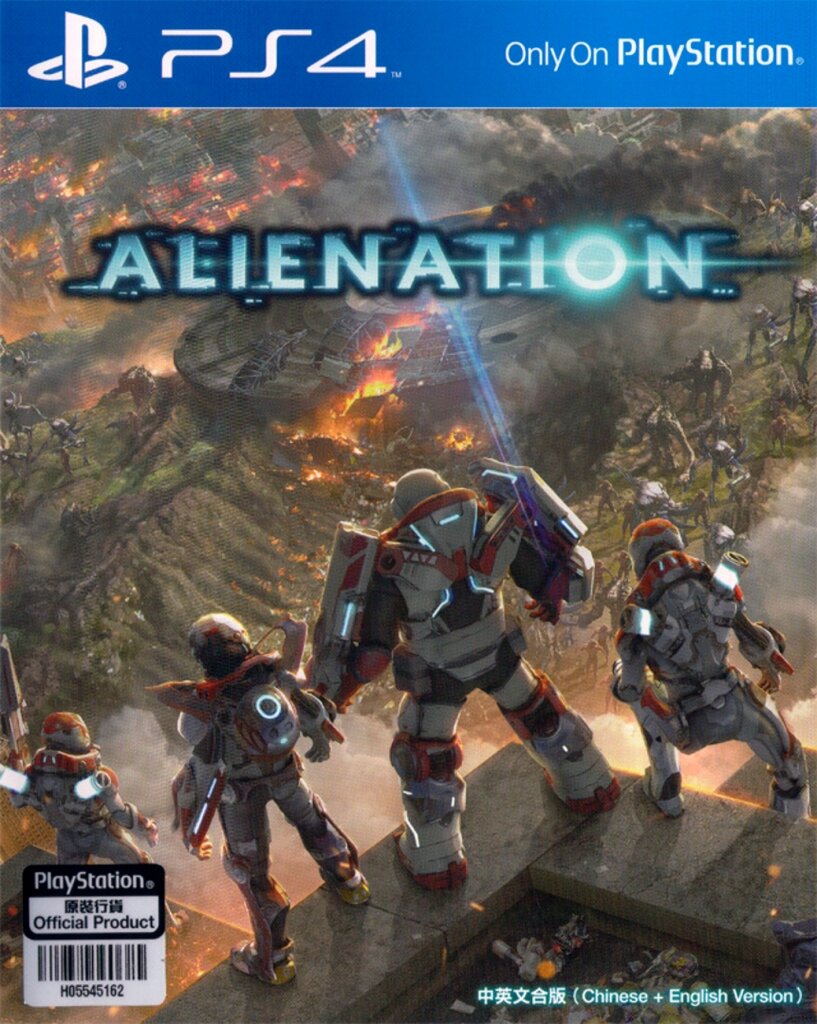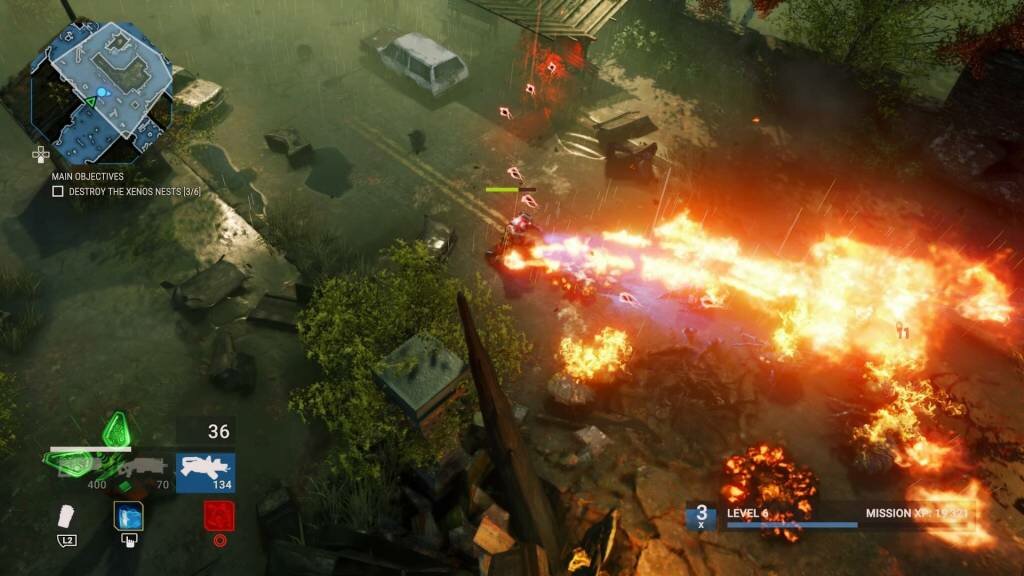Who else but Housemarque could’ve perfectly melded arcade-inspired twin-stick shoot ‘em up gameplay with class-based multiplayer, RPG character progression, and an addictive loot system? The Helsinki-based developers are after all, in their own words, the torchbearers of the classic arcade game ethos. They’ve been riffing on Asteroids since the early 1990s with their Stardust series, paid homage to Defender with Resogun, the best title to play on the PlayStation 4 at launch, and even collaborated with Eugene Jarvis, the man behind Defender and a few more of the most iconic arcade games of all time, on 2017’s Nex Machina. Fast-paced, responsive, good feeling gameplay is at the core of their best works, some of which represent my favorite games of the last couple of console generations. And now, after a few dozen hours with it, I can add Alienation to that list.
As with most of their games following 2007’s Super Stardust HD, Alienation was published by Sony and has remained exclusive to their platforms. In this case, Alienation was released digitally for the PlayStation 4 on April 26, 2016. It also received an English-language physical release in Asia, which is great for those that want something to hold in their hands, like when you have to get up from the couch to switch out discs. Seriously though, as someone with an almost conspiratorial need to own the physical version of something, it’s nice to at least have the option. And owning an imported copy of a game that didn’t get a local release adds a little panache to the whole affair. There are pitfalls too, however. For instance, following an impulse purchase of the game’s season pass, I realized: “Oh yeah, just because I’m playing in English, that doesn’t mean the DLC from the American PlayStation Store will be compatible.” At least it was on sale!
Although Alienation is a standalone game, its origins actually lie in another Housemarque title: Dead Nation. Released for the PlayStation 3 at the tail end of 2010, Dead Nation was the studio’s first to emulate the top-down perspective, twin-stick shooter gameplay of Robotron: 2084 or Smash TV, as opposed to what they had done with Super Stardust HD. Set amidst a zombie apocalypse, up to two players navigated through ten stages on foot, using an arsenal of standard weapons like machine guns and shotguns to stay alive. Points were awarded for racking up kills, with a multiplier furthering that objective; money picked up could be used to upgrade the weapons, and a story told through concept art cutscenes played out between stages. From afar, it seems to have a lot going for it, but after experiencing the same core gameplay with the addition of character classes and a loot system, wrapped around a more appealing theme, I don’t know that I need to check it out.
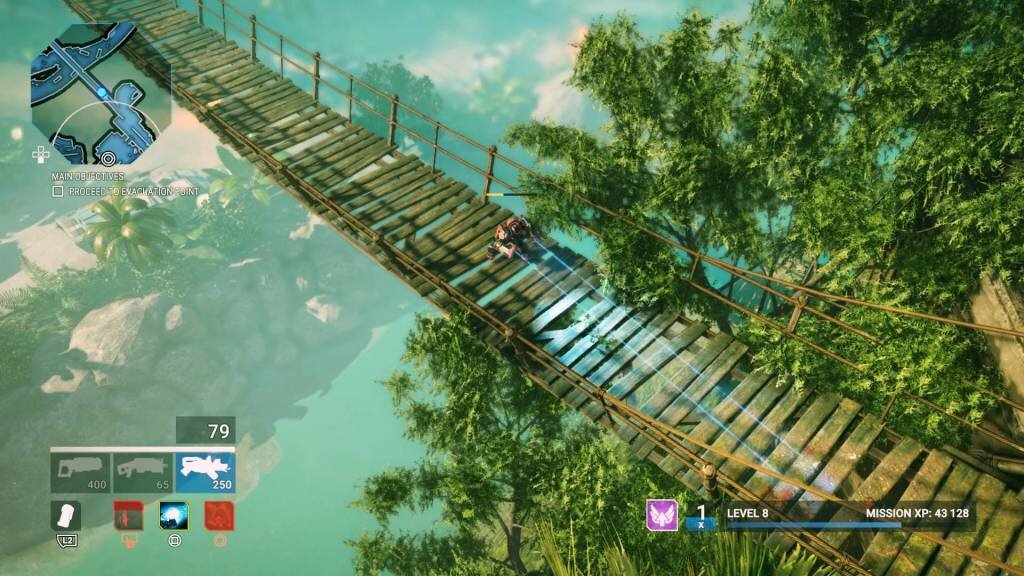
Presented through pre-mission briefings and mid-mission objective updates, Alienation’s story followed a small group of soldiers as they fought to reclaim Earth, ravaged after years of alien invasions. They made strategic inroads in places like Ashland, Nebraska and Fort Itaipu in Brazil, before eventually infiltrating alien vessels above the planet. Despite advances being made from one stage to the next, I didn’t feel like there were narrative peaks or valleys; there was no sense of accomplishment from overcoming the immense alien combatants. Enemies were procedurally generated in each stage – their placement, quantities, and the instance of hordes – and with tasks that varied little functionally, the experience from stage to stage wasn’t too different. The narrative was little more than an emotionless framework threading the stages together and while that sounds harsh, it’s certainly not a knock against the game; Housemarque is a gameplay-first studio and on that front they executed flawlessly.
There were three classes to play as and each had a unique trio of active abilities, an exclusive primary weapon, and different walking/dash traits. Regardless of what class I chose, I was smitten with my avatar’s responsiveness and aiming speed. For instance, the Tank was slower than the rest, but his longer dash offset this. He was predictably set up to deal with crowds of enemies and protect the group with unique active abilities like a shield and an area-of-effect ground smash. And, his dual-wielded Energy Guns allowed me to dump into foes, but I wasn’t a fan of its short range. The Saboteur was similarly structured to handle enemies at close range, albeit more offensively minded. Unique to this class was the short-range SMG primary weapon, and abilities that accentuated the Assassin’s Creed-like blades equipped to the avatar’s forearms. I spent the most time as the Bio-Specialist who seemed like the all-around best choice. His long-range Xenorifle could reach to the edges of the screen while his unique abilities – poison cloud trails, enemy-seeking wraiths, and party healing – felt like the best mix of offense and defense.
Instead of racking up points for kills as in Dead Nation, fallen enemies in this game yielded experience points. Each new level brought about increased health and an ability point to advance the skill trees for an avatar’s abilities. Besides the unique active abilities, each class had access to the same three passive abilities, which improved their rush, melee, and health. A higher level also meant the strength of weapon drops improved. As I mentioned previously, each class had a primary weapon that was unique to them. However, they also had a secondary weapon and a heavy weapon equipped, in addition to a piece of equipment like a grenade or boomerang. Although the setting was futuristic, the weapon mix was decidedly realistic, think revolvers, shotguns, flamethrowers, etc. Better weapons had slots to socket modifiers into, and especially good ones had added effects, such as causing grenades to spawn when damage was taken.
So when I was level 12 and a killed enemy dropped a weapon, it would always be level 12 as well. Now it wasn’t a given that that weapon was better than what I was using, even if the new weapon was a higher level; I could be using an equivalent gun of a lower level that was still stronger because its rarity was of a higher degree. With weapon drops, Housemarque implemented a loot system in the vein of Destiny, right down matching colors, even. Rarity didn’t matter too much during the initial playthrough, it was important to just use whatever was the strongest to complete the game. At that point, the ability to play on harder difficulties was unlocked, which drastically increased the rate of loot drops for legendary weapons. Plus, until reaching the level cap of 30, which would come sometime on a second playthrough, an avatar’s arsenal was constantly shifting.
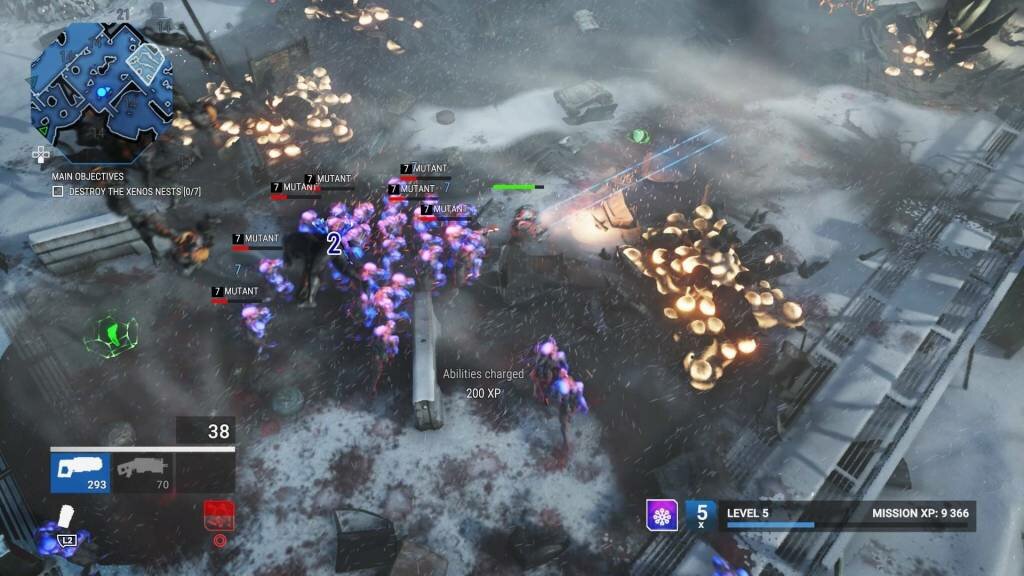
After a twelve hour co-op playthrough, and another twenty-four grinding levels and loot drops, I’m confident in asserting that the game doesn’t really start until this second playthrough, or world level 2 as the game calls it. Granted, this is coming from someone who spent way too much time doing the same thing in Phantasy Star Online but in both cases, the loop is so, so satisfying. It’s a truly repetitive experience playing the same levels over and over again on harder difficulties, but when a weapon drops that’s even just slightly better than what’s currently equipped, it’s downright euphoric. Slotting cores into the sockets afterwards, rerolling the weapon’s traits, everything is in service of seeing the power numbers go up, and it’s a good feeling.
It’s a powerfully compelling loop, but ultimately one of diminishing returns. After thirty-six hours, that’s where I’m at with my main character. There are still methods to improve my arsenal and tougher difficulties to challenge me, but I’m feeling like I came, I saw, I conquered; that the minimal improvements ahead of me aren’t worth it. I’ve completed a playthrough with the Tank already and will at least finish a playthrough as the Saboteur, but my time with the game is coming to an end. There are few trophies standing between me and the platinum, but I don’t know that I have it in me. On that front, the developers did a great job with the trophy list, incorporating standard campaign completion trophies with a variety of engaging challenges. And although I never ventured online into another person’s playthrough or participated in online PVP, the game is still surprisingly active.
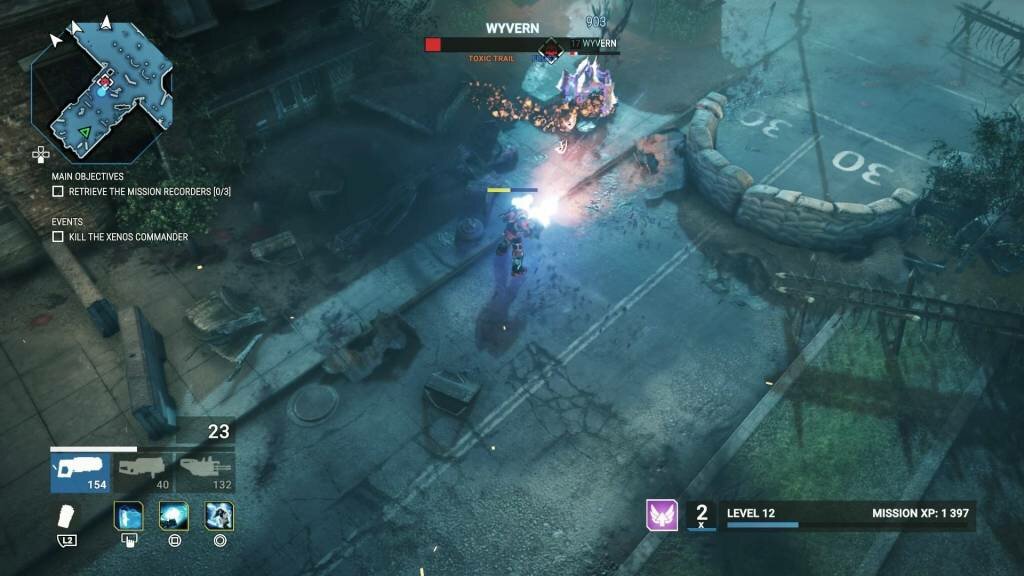
With Alienation, Housemarque took the core gameplay of Dead Nation and the arcade shoot ‘em ups that inspired it, incorporated class-based multiplayer, and layered RPG character progression and loot right on top. It’s a character-orientated experience and in that regard it differs from most twin-stick shooters, but nonetheless, it’s one of the best. The character development loop, and more specifically the hunt for better weapons, is an addictive one, despite growing stale over time. There’s still a pretty healthy online community for this game, and in addition to potential co-op sessions, the game even has a PVP mode that I admittedly, didn’t even touch. Still, this game’s unique blend of twin-stick shoot ‘em up gameplay, RPG character progression, and loot, had me hooked, and it now reigns as my favorite Housemarque game.
As a postscript, I did go ahead and trudge my way through another half-dozen or so hours of level grinding to get the platinum trophy. That’s really all I had left – reaching level 30 as the Tank and Sabotuer classes, in addition to a Hardcore (permadeath) character – and man was it a bore! After a spate of progression, the most efficient way to grind was to replay the same level over, and over… and over, and after I don’t know, the thirtieth time, I was just ready to move on. But, I stuck with it, and even picked up some more gameplay relevant tips that would’ve helped on my initial playthrough. Oh well. Anyways, I’ll really appreciate that platinum trophy when I’m on my deathbed!

